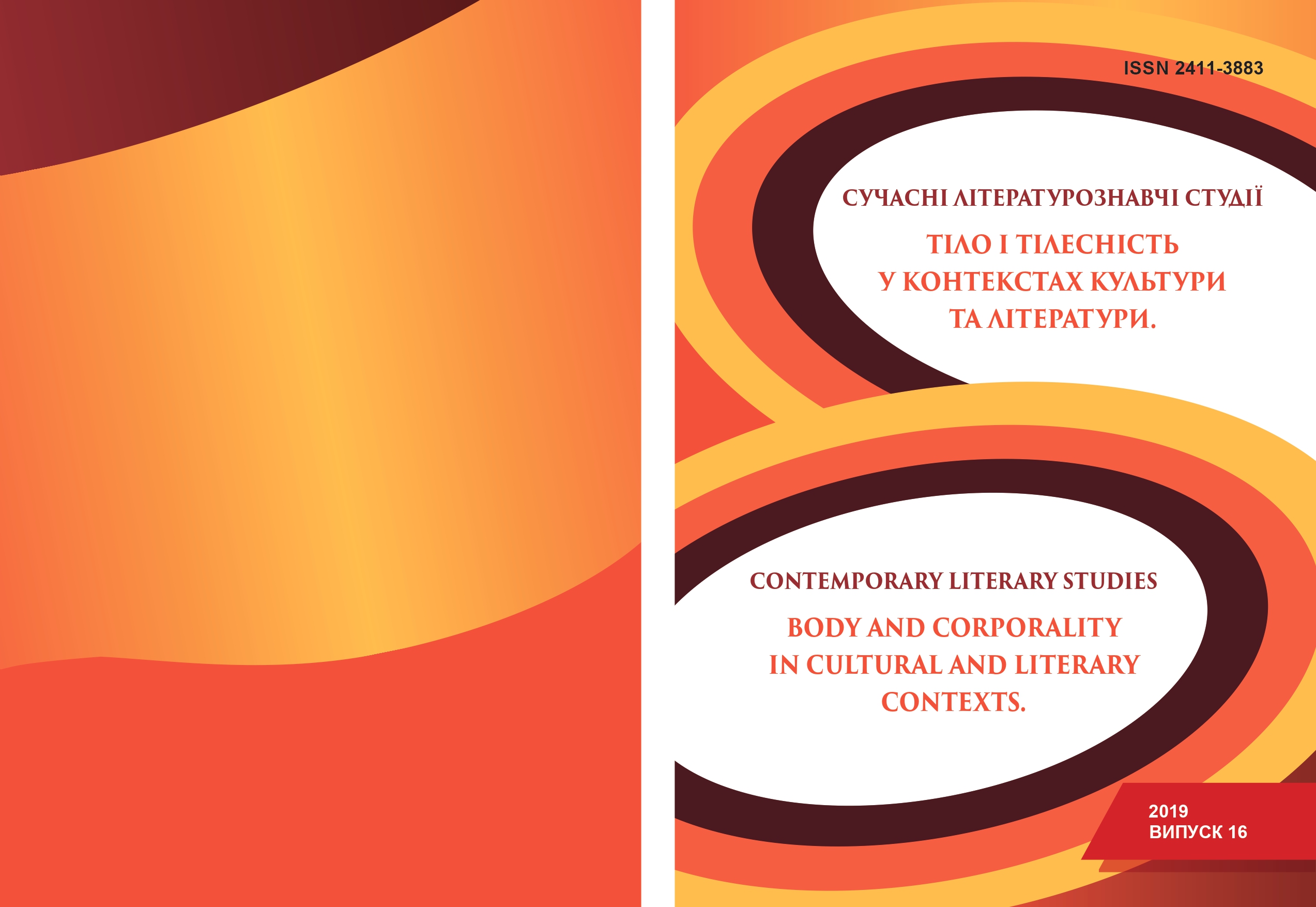RHETORIC AND HOMILETICS: CONCEPTS OF PREACHER’S PERSONALITY
DOI:
https://doi.org/10.32589/2411-3883.16.2019.187441Ключові слова:
traditional and New Rhetoric, requirements to the orator, concepts of preacher’s personality, values orientation, body languageАнотація
The theme of this article is the concept of the preacher in the process of modern communication. The requirements for orators, which were set up in Antiquity, constantly changed depending on the period, style of the epoch, social environment, the perception of rhetoric, its purpose, etc. In the middle of the 20th century the New Rhetoric was formed, which acquired the pragmatic features and became closely related to practical communication, paid great attention to the body language of the orator often neglecting the value orientation of the orator as the basis of the persuasion. New challenges to rhetorical communication are also presented by the media, with their visual accents diminishing the need to use a variety of rhetorical stylistic devices to enhance persuasive force.
One of the most complex and mysterious types of rhetoric is religious rhetoric, whose characteristics depend on the specificity of confession, the level of philosophy and theology of particular epoch, interpretations, the liturgy of Mass, as well as on the sender of the main message − the personality of the preacher, orientation of his values, temperament, characteristics of the non-verbal language. The purpose of this article is to discuss some of the concepts of the orator-preacher personality (S. Freud, C.G. Jung,E. Berne), and also to look at the features of the body language. The classical and contemporary conceptions of the orator, the general requirements to his mastery, the concepts of the preacher’s personality and some specificity of the body language in preaching will be discussed to achieve this goal. InLithuania, the concept of spiritual personality was discussed by P.K. Jaunius, non-verbal body language was analyzed by V.S. Vaičiūnas, the traditional concept of the orator was discussed by R. Koženiauskienė, etc. Lithuanian scholarly works mostly deal with the specificity of homilies created prior to the 20th century (E. Ulčinaitė, J. Pajėdienė, K. Mačiulytė, P. Subačius). The research will be based on the works by W. Engemann, R. Koženiauskienė, V.S. Vaičiūnas, E. Pečiulis, D. Zarefsky, and others. The comparative methodology will be used.
Посилання
Engemann W. Homiletics: Principles and Patterns of Reasoning. − Berlin / Boston: Walter de Gruyter GmbH & Co.KG, 2018. – 579 p. Available at:
Koženiauskienė R. Retorika: Iškalbos stilistika [Rhetoric: Stylistics of Eloquence]. – V.: Mokslo ir enciklopedijų leidybos institutas, 2001. − 464 p.
Koženiauskienė R. Juridinė retorika [Legal Rhetoric]. – V.: Teisinės informacijos centras, 2005. − 472 p.
Pečiulis Ž. Efektyvi komunikacija [Effective Communication]. – V.: Versus aureus, 2001. – 212 p.
Pease A. ir B. Kūno kalbos vadovas [The Definitive Book of Body Language]. – V.: Alma Littera, 2012. − 432 p.
Spies S. Kūno kalba [The Body Language]. – V.: Vaga, 2006. − 296 p.
Vaičiūnas V.S. Pamokslų rengimas ir retorika [Preparation of Sermons and Rhetoric]. – K.: Vytauto Didžiojo universitetas, 2007. − 310 p.
Zarefsky D. Oratorystės menas: Sėkmės strategijos [Public Speaking: Strategies for Success]. – V.: Alma littera, 2011. – 535 p.
##submission.downloads##
Номер
Розділ
Ліцензія
1. Дослідження, що публікуються у збірнику наукових праць, повинні бути виконані відповідно до чинного законодавства України та етичних норм. Основний обов’язок автора полягає в тому, щоб виконати таке дослідження, яке заслуговує на об’єктивне обговорення науковою спільнотою його значущості.
2. Автори повинні формулювати свої наукові спостереження у такий спосіб, щоб їхні результати могли бути підтверджені іншими вченими, без підробки отриманих висновків або маніпуляції ними.
3. Автори статей несуть відповідальність за зміст статей і за сам факт їх публікації.
4. Автор повинен цитувати ті публікації, які вплинули на сутність роботи, а також ті, які можуть швидко познайомити читача з попередніми роботами, важливими для розуміння цього дослідження. За винятком оглядів, слід мінімізувати цитування робіт, які не мають безпосереднього відношення до змісту дослідження. Автор зобов’язаний провести джерельний пошук, щоб знайти і процитувати оригінальні публікації, тісно пов’язані з цим матеріалом. Необхідно також коректно вказувати на джерела принципово важливих матеріалів, використаних у цій роботі, якщо вони не були отримані самим автором.
5. Автори повинні дотримуватися усіх чинних вимог щодо публікацій рукописів. Неприпустимим є плагіат та його удавання за оригінальну розвідку, а також подання до редакції раніше опублікованої статті. У випадках виявлення плагіату відповідальність несуть автори поданих матеріалів.
6. Співавторами статті мають бути ті особи, науковий внесок яких є вагомим у її зміст та які розділяють відповідальність за здобуті результати. Автор, який подає рукопис до друку, відповідає за те, щоб до списку співавторів були включені всі ті й лише ті особи, які відповідають критеріям авторства. У статті, написаної декількома авторами, той з авторів, хто подає до редакції контактні відомості, документи і листується з редакторами, бере на себе відповідальність за згоду інших авторів статті на її публікацію у збірнику.
7. Автори повинні повідомити редактора про будь-який потенційний конфлікт інтересів, на які могла б вплинути публікація результатів, що містяться у рукописі.
8. Автори повинні чітко вказати джерела всієї процитованої інформації, оформити посилання на наукові джерела відповідно до вимог ДСТУ ГОСТ 7.1:2006.
9. Редколегія має право відмовити у публікації статті за умов недотримання зазначених вимог.
10. Автор може висловити побажання не залучати деяких рецензентів до розгляду рукопису. Проте головний редактор може прийняти рішення залучити одного або декількох із цих рецензентів, якщо переконаний, що їх думки є важливими для неупередженого розгляду рукопису. Таке рішення може бути прийняте, наприклад, у тому випадку, коли є серйозні суперечності між цим рукописом і попередньою роботою потенційного рецензента.
11. Запобігання псевдонауковим публікаціям є відповідальністю кожного автора, головного редактора, рецензента, видавця й організації.


